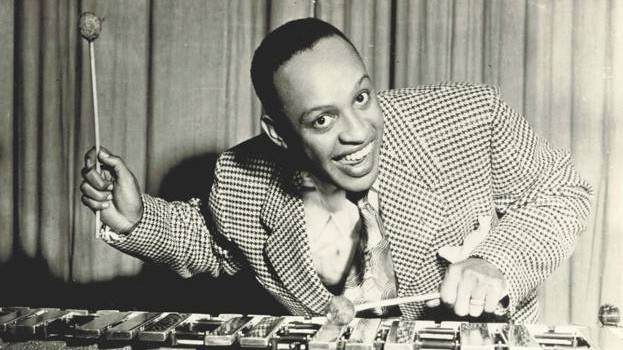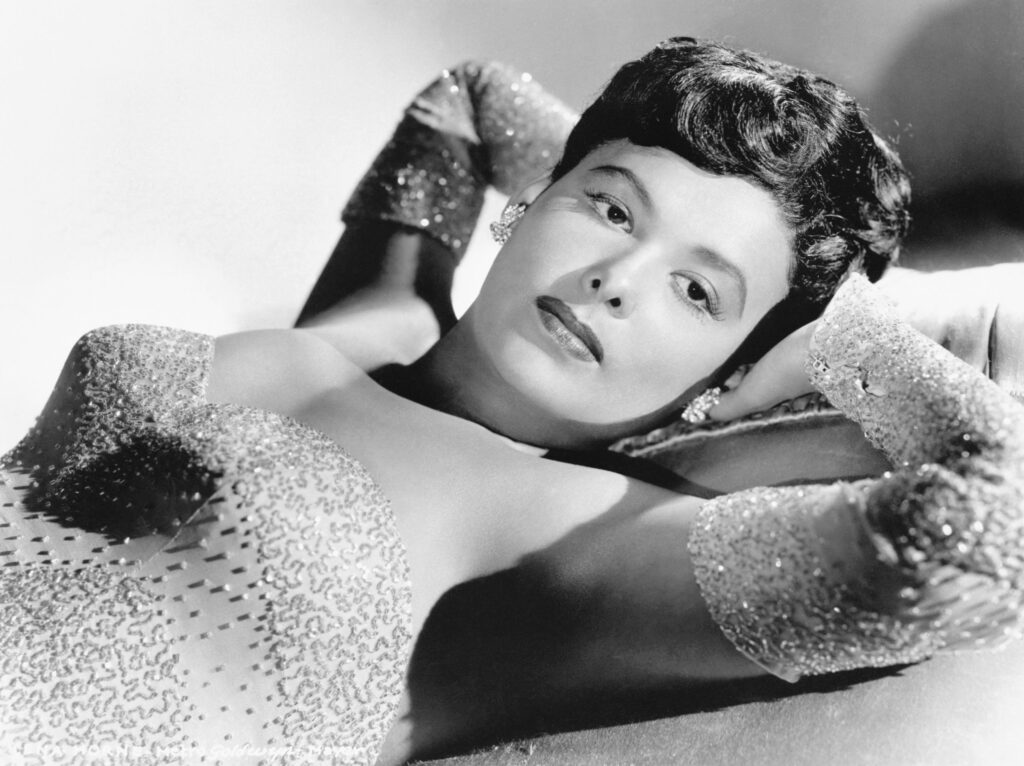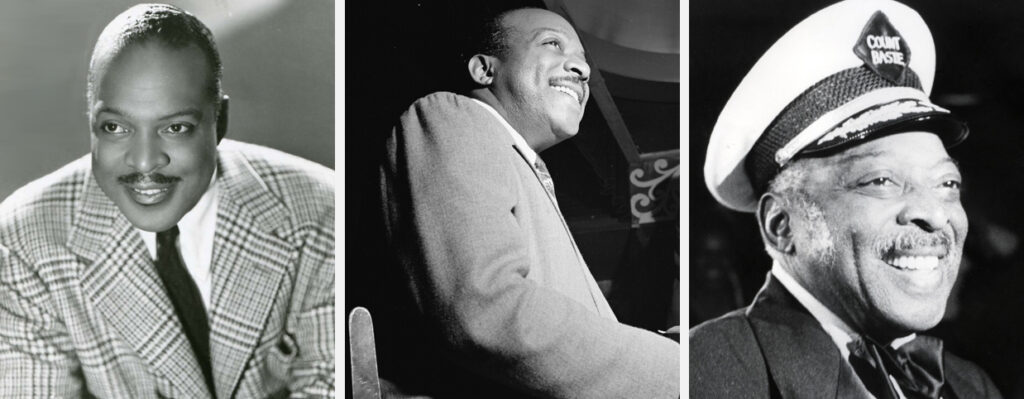WICN AOM, October 2023: Pharoah Sanders
Written by Doug Hall on October 2, 2023
The evolution of spiritual jazz began with elements of free jazz, avant-garde jazz, and modal jazz, cited by jazz critics to have been heavily influenced by John Coltrane’s A Love Supreme (1965). The range of musicians reimagining their interpretations of jazz music following this seminal release stretches across generations of players. There are a number of current jazz artists exploring this vein, most prominently the popular commercial crossover, genre-mixing saxophonist & bandleader Kamasi Washington, evident particularly on his 2015 release The Epic.
But one of the most important originating contributors to spiritual jazz, and the most dedicated disciple of this direction, is the legendary saxophonist Pharoah Sanders. Highly individualistic in his approach to deconstructing the traditional jazz structure, in 1964 he came to the attention of John Coltrane, and for the last two years of Coltrane’s life would be front and center as an unofficial bandmember of the historic ensemble that would pursue and push beyond the limits of musical foundations.
As stated by Andy Beta in Pitchfork, regarding the influence of A Love Supreme, “Coltrane inspired other jazz musicians to create music searching for transcendence.” Along with jazz pianist Alice Coltrane, “free” jazz pioneer trumpeter Don Cherry, and soulful, funky, electronic keyboardists and instrumentalists Sun Ra and Lonnie Liston Smith, Pharoah would seek to express a passion of intensity that distinguished himself from other musicians of this genre.
After Coltrane died in ‘67, Sanders would become heavily influenced by the African rhythmic sounds and Indian incantations that served as a precursor to what we now refer to as “world music” and which was already voicing itself in his widening range of international musical immersion. As stated by AllMusic critic Chris Kelsey, “Sanders incorporated elements of world music and even more pop-adjacent vocalizations into his sometimes-chaotic style, crossing over to audiences who weren’t primarily jazz listeners with the poetic mysticism.”
Moving on from the loss of Coltrane but not his impact, Sanders went on to record with his widow, the pianist and harpist Alice Coltrane, on albums including Ptah, the El Daoud and Journey in Satchidananda, both released in 1970.
He would then reemerge afterward and establish himself as a leader in the spiritual jazz movement. The album Karma, released in 1969, is still seen as Sanders’ creative opus. While other similarly grouped musicians were characterized by seeking spiritual statements in a post-Coltrane world of jazz, he delivered a critically acclaimed conceptual piece, made up of two compositions: the 32-plus minute The Creator Has a Master Plan and the five-and-a-half-minute Colours.
Coming five years after A Love Supreme and at the peak of the ‘60s, Karma became the fullest iteration of spiritual jazz. As expressed in numerous acclaimed jazz reviews, the breakthrough breadth of sound on Sanders’ horn, and compositional movements with free-association instrumentals and varying dynamics of bandmembers, made it a genre-changer. As summed up by music critic Andy Beta, “Its joyous, cycling bass-line and chanted title evokes the memory of A Love Supreme. The Creator Has a Master Plan, a 33-minute careen between soul and free jazz that soundtracked many a trip to the minds of listeners at home and conjured altered states in its players as well. ‘Pharoah was like a God, it was so spiritual,’ said Norman Connors, one of the many drummers who played with Sanders during that era. ‘The music was very sacred and had a certain tone about it, mystical and just beautiful.’”
Many associations and intersections with like-minded jazz musicians and contemporary and funk musicians would occur over the course of a long and productive career, releasing a mixed selection of compositional excursions. In a statement of contrast, Black Unity (1971), uses a funkier influence from seasoned session players and regular Sanders’ sidemen Cecil McBee (acoustic bass) and Billy Hart (percussionist), as well as introducing a young and upcoming bassist named Stanley Clarke. AllMusic critic Thom Jurek gave an expansive review: “This is a solid, moving piece of work that seals the cracks in Sanders’ vocabulary. His arrangement and the staggering of solos into the whole are magnificent. Here was Sanders as he saw himself in the mirror, a mass of contradictions, and the embodiments of the full fury and glory of music in one man.”
Accompanying this same period were similar ensemble statements from releases during the ‘70s and ’80s, including standouts Deaf, Dumb, Blind (1970), Thembi (1971) and Elevation (1974). Sanders would further stretch the limits of voicings on his instrument. As described in a profile by daily.redbullmusicacademy reviewing the ‘70s to ‘80s Impulse recording period of Sanders, “These large ensembles move as one entity, the battery of drums and myriad African percussion steadily driving the music forward. In this context, Sanders’s horn performs an act of transubstantiation.”
This was also a period when his audience would diminish as “free” jazz became less popular as jazz fusion encroached with albums like Head Hunters (1973) by Herbie Hancock and Miles Davis’ Bitches Brew (1970), along with other major musical forces in this genre: Chick Corea’s Return to Forever; Larry Coryell and the Eleventh House, Joe Zawinul and Wayne Shorter’s Weather Report, and John McLaughlin’s Mahavishnu Orchestra.
During the ‘80s, Sanders would also reconnect with his past and give back recognition and reverence to the contributions of his mentor on Blues for Coltrane (1987), released by former bandmate McCoy Tyner. This accompaniment, which included jazz standards and new renditions of Coltrane compositions, would earn Sanders a shared Grammy Award with Tyner, for his work on the collaborative album.
In the ‘90s, Sanders would widen his scope to include more mainstream compositions and recordings but also seek out new-world musicianship, such as Moroccan Gnawa musician Maleem Mahmoud Ghania on The Trance of Seven Colors (1994). Leaving Impulse Records, he would partner with innovative producer Bill Laswell from Verve Records, with A Message from Home following in 1996 under Laswell’s direction. This project became a comeback album, garnering new listeners, by offering African percussion and rhythms with an overpowering groove. As reviewed by AllMusic critic Richard S. Ginnell, “The record really develops into something special when Sanders pits his mighty tenor sound against the pan-African beats, like the ecstatically joyful rhythms of Tomoki and the poised, percolating fusion of American country & western drums and Nigerian juju guitar riffs on Country Mile.
As Sanders had notoriously difficult relationships with record labels, there is a virtual gap of two decades where he was not the leader of his own recordings, though he continued to perform and made occasional side recordings. Sadly, this is obviously a loss for both jazz listeners and the potential archives of unrecorded material. However, most recently, there is a re-release of Pharoah, Sanders’ most intimate recording from 1976, made after leaving Impulse Records and retreating with his wife and a small band of musicians to a small rustic studio in upstate New York. A New York Times article focused on its importance as an individual musical statement, its non-commercial circulation, and now wider availability, “‘Pharoah’ has been passed around for decades mostly as a bootleg. For those who have experienced it, the album often becomes a touchstone.”
His final major recording is Promises (2021), as Sanders passed away in 2022 at the age of 81. A collaboration with the London Symphony Orchestra and Sam Shepherd, the electronic musician known as Floating Points, it was widely applauded and found its way onto a short list of many “best of the year jazz album” critic reviews. Giovanni Russonello of the New York Times noted that Sanders’ “glistening and peaceful sound” was “deployed mindfully throughout the album,” adding, “He shows little of the throttling power that used to come bursting so naturally from his horn, but every note seems carefully selected — not only to state his own case, but to funnel the soundscape around him into a precise, single-note line.”
From an instrumental perspective, Sanders’ revolutionized saxophone techniques by manipulating sounds in any variety that he could expel from his horn. In particular, he used “overblowing” (reaching other notes by breath control alone) or “multiphonics” (voicing several notes at once) and other experiments of expression. In a 1978 review, Robert Palmer of The New York Times wrote, “His control of multiphonics on the tenor set standards that younger saxophonists are still trying to live up to, and his sound — huge, booming, but capable of great delicacy and restraint — was instantly recognizable.” Sanders’ curiosity and boundary testing on his horn is mirrored by contemporary musicians today.
Remembering their six years together, in a reflection on the spirit of Sanders’ musical muse, his wife Bedria Sanders said, “Music was something to elevate you above all this other stuff that was going on, to a more spiritual realm…to put you back on focus, to get back to yourself and what you really are here for. To get back to the natural state of the universe, which is peace.”
As a daring originator of tone and sound on his instrument, a renegade in compositional construction and a commandingly forceful bandleader of wide-ranging experimental ensemble arrangements, there was also the contradiction of his desire to express a meditative spiritual nature. As a major innovator in the jazz genre, maintaining rebelliously independent control over his compositions, he remained an iconoclast, refusing to follow or imitate existing artistic trends or statements. In his own words, he supplies a short philosophy and approach to his art form: “I’m always trying to make something that might sound bad sound beautiful in some way. I’m a person who just starts playing anything I want to play, and make it turn out to be maybe some beautiful music.”




